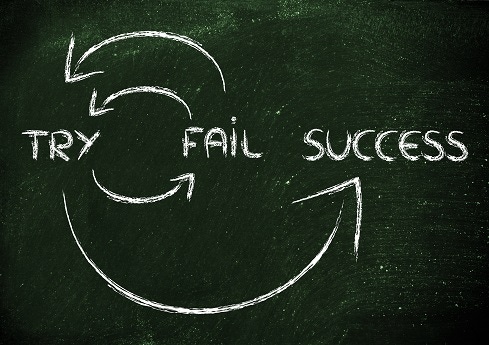Management consultants often tell leaders, ‘Don't be afraid to fail.’ But how should leaders put that advice into practice? Here are four strategies.

Don’t be afraid to fail. Easier said than done, right? But do you know which teams are the most successful when times get tough? The ones that aren’t afraid of failure.
After more than two decades as a CTO and co-founder, I’ve learned how to embrace my (many) failures and use them to succeed. Here are four strategies I lean on as a leader to spot failures and use them as opportunities to learn and continually improve.
Spend Time with Individual Teams
While leading an engineering organization, I have often ended up with layers of abstraction; it can feel a little bit like a game of broken telephone. There’s a lot of summarizing that tends to happen, and by the time the information gets to me, some of the critical things or nuanced details have been dropped.
I see immense value in getting real, direct feedback from engineers who are in the trenches every day. It gives me the opportunity to ask, “What’s going on in your world? Are others concerned about this too?” This helps me identify gaps in our processes.
After identifying areas of improvement to our platform earlier this year, this is one of the strategies I implemented. I dedicated time to embedding in an engineering team while observing and talking to others. I quickly saw ways that we were limiting our problem-solving abilities. Essentially, we were attempting to solve organizational problems within the bounds of individual teams.
I wouldn’t have understood this without spending time with those teams. Taking time to understand where you’re optimizing and where you’re making tradeoffs is crucial to unblocking your team’s ability to move forward.
Develop a Strong Feedback Loop
Every organizational design requires making tradeoffs. Some things within a team will be easy, and some will be hard. You put mitigations in place to minimize the impact of the hard stuff, but you have to know what's working.
Without providing clear direction to your teams and getting their feedback, it’s guaranteed to go awry. None of this can happen without spending time with them, asking about what they’re experiencing, really listening, and using that feedback to improve.
Create a Blameless Culture
When my team examines our processes to determine areas for improvement, one of the most common questions I ask is, “In what ways did the system fail us?” We look at the system rather than the people behind it. If the same humans would get different outcomes operating in a different system, then let’s talk about the system. This is where we break ties with blame.
As a leader, walking into this moment can get really uncomfortable if you’re not ready for it. Placing blame on an individual is easy, and it feels safe. It’s also super lazy. As you start to examine the system, you find that the design of the system -- the collection of explicit or implicit values, priorities, and decisions over time that created your current context -- was not the work of the individuals on your team. It was the work of organizational leaders, including yourself.
How you choose to deal with that fact is at the center of building a blameless culture. “Blameless” means we talk about it: We put everything on the table, and we comfortably analyze the shortcomings of what we built. This creates an environment where engineers are not afraid to fail. They understand that admitting to failure means we can find and fix our problems faster and then learn from them to improve.
Be the Example You Want to See
Blameless culture extends to my fellow executives as well. I don’t just promote blamelessness to our engineering teams, it's something our entire leadership team practices.
At an executive level, this creates room for creativity and experimentation. Ultimately, I care about outcomes, and if I can create an outcome by trying something new and different, I need the freedom to know that it’s okay to fail.
This level of support is why I felt empowered to dedicate time to working with individual teams. My fellow leaders knew that I was focused on finding the best outcome for our employees, our product, and the company. If my hypothesis was incorrect, they knew that I would identify that, learn from it, and try something new to get us to the right outcome.
There are a lot of tools in the leadership toolbelt, but ultimately, it comes down to knowing what’s going to work for you and your team. What is the exact problem you’re trying to solve?
By investing time with the teams, you learn to see their perspective and can create a safe space for them to fail. By extending that blamelessness into your own practices, you’ll be able to figure out what that problem is, and you’ll be well on your way to answering it.
About the Author(s)
You May Also Like







